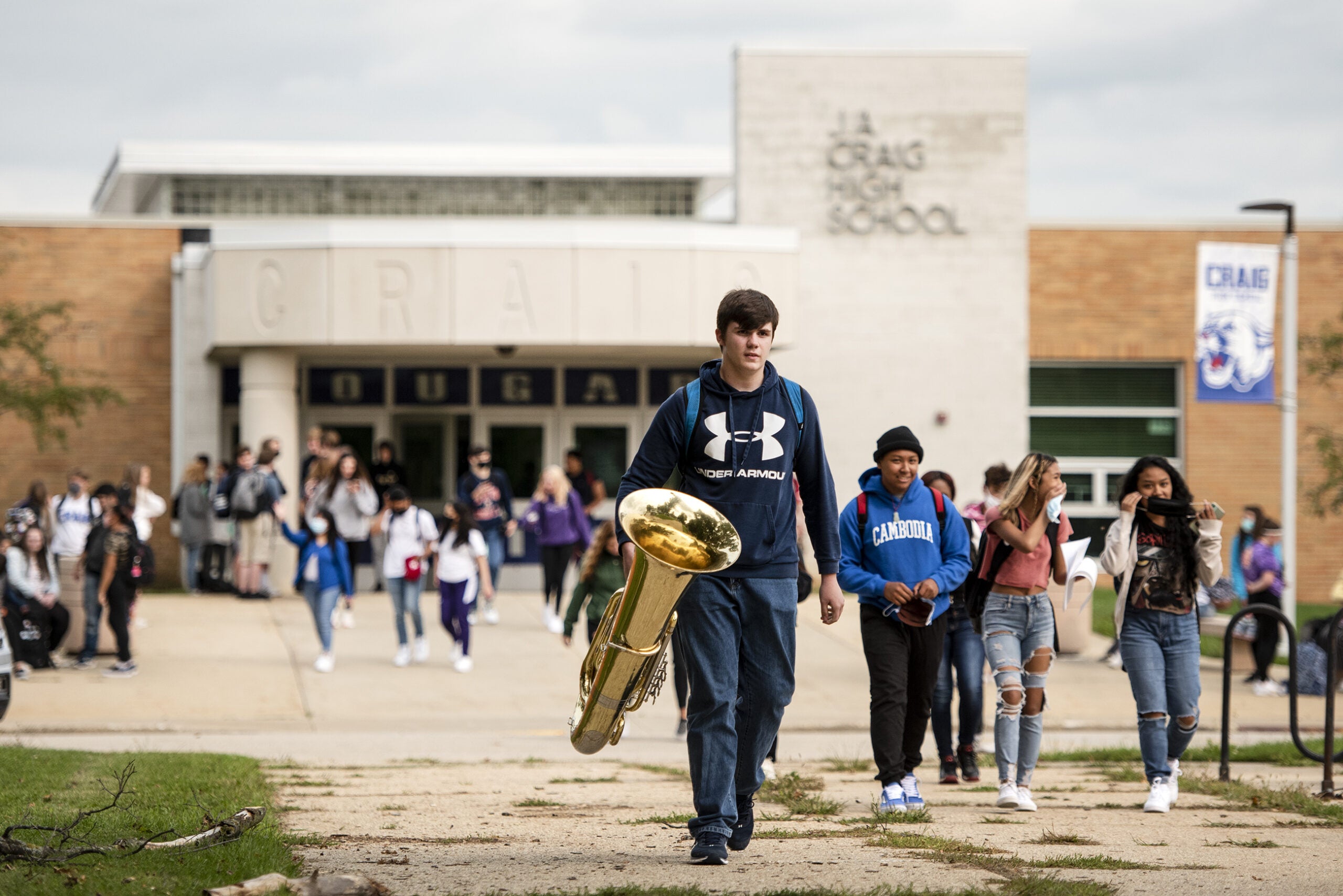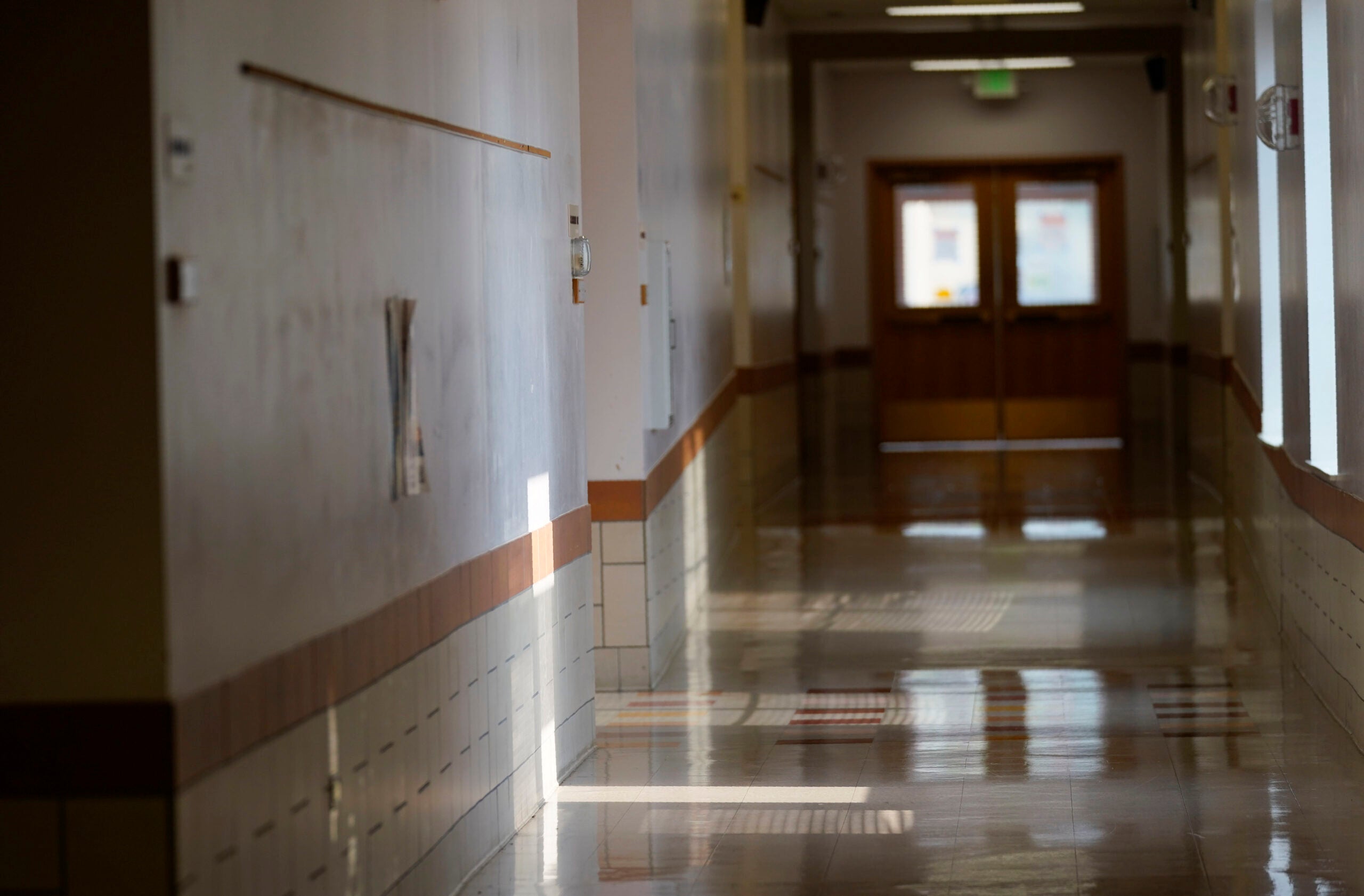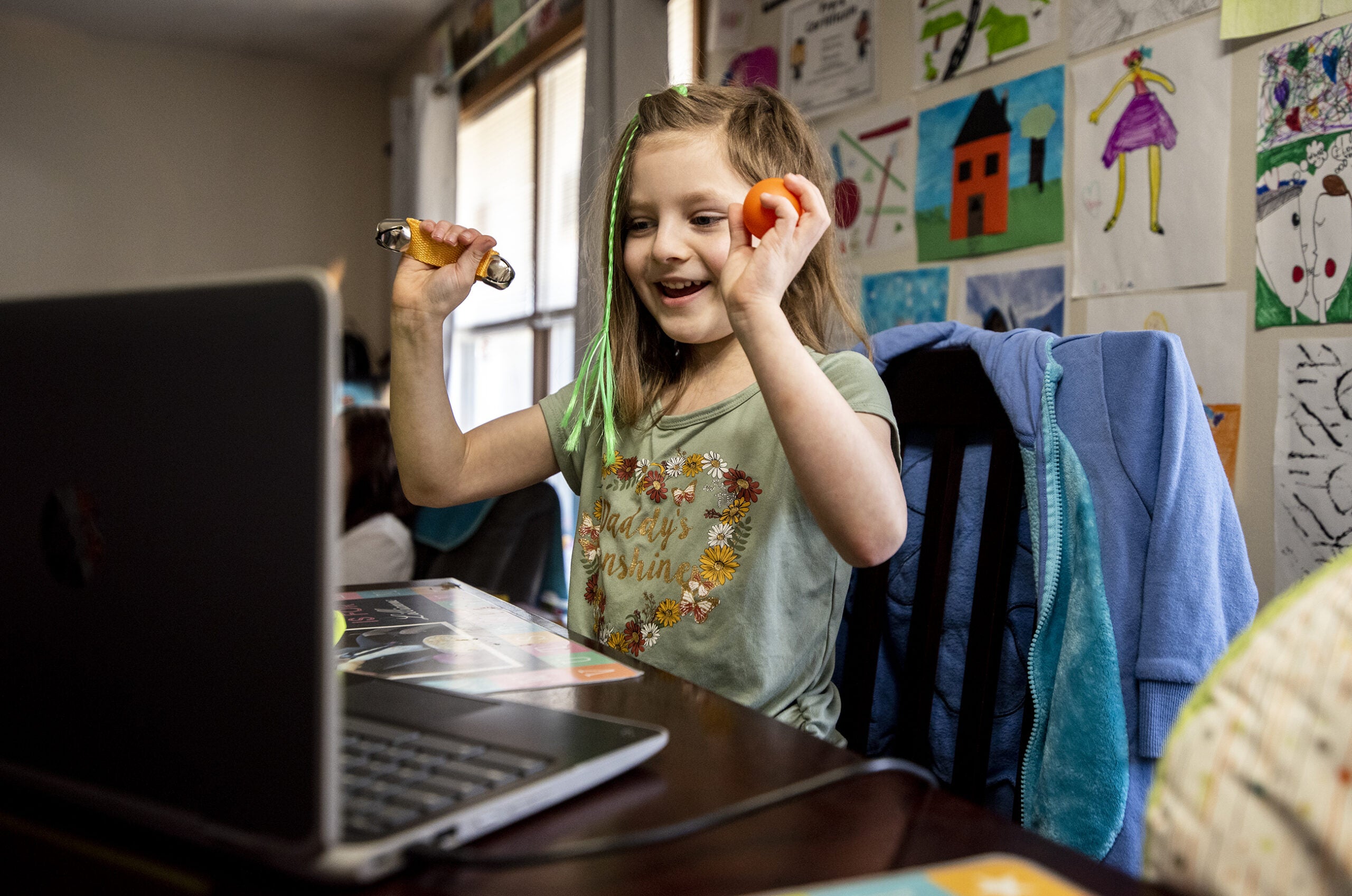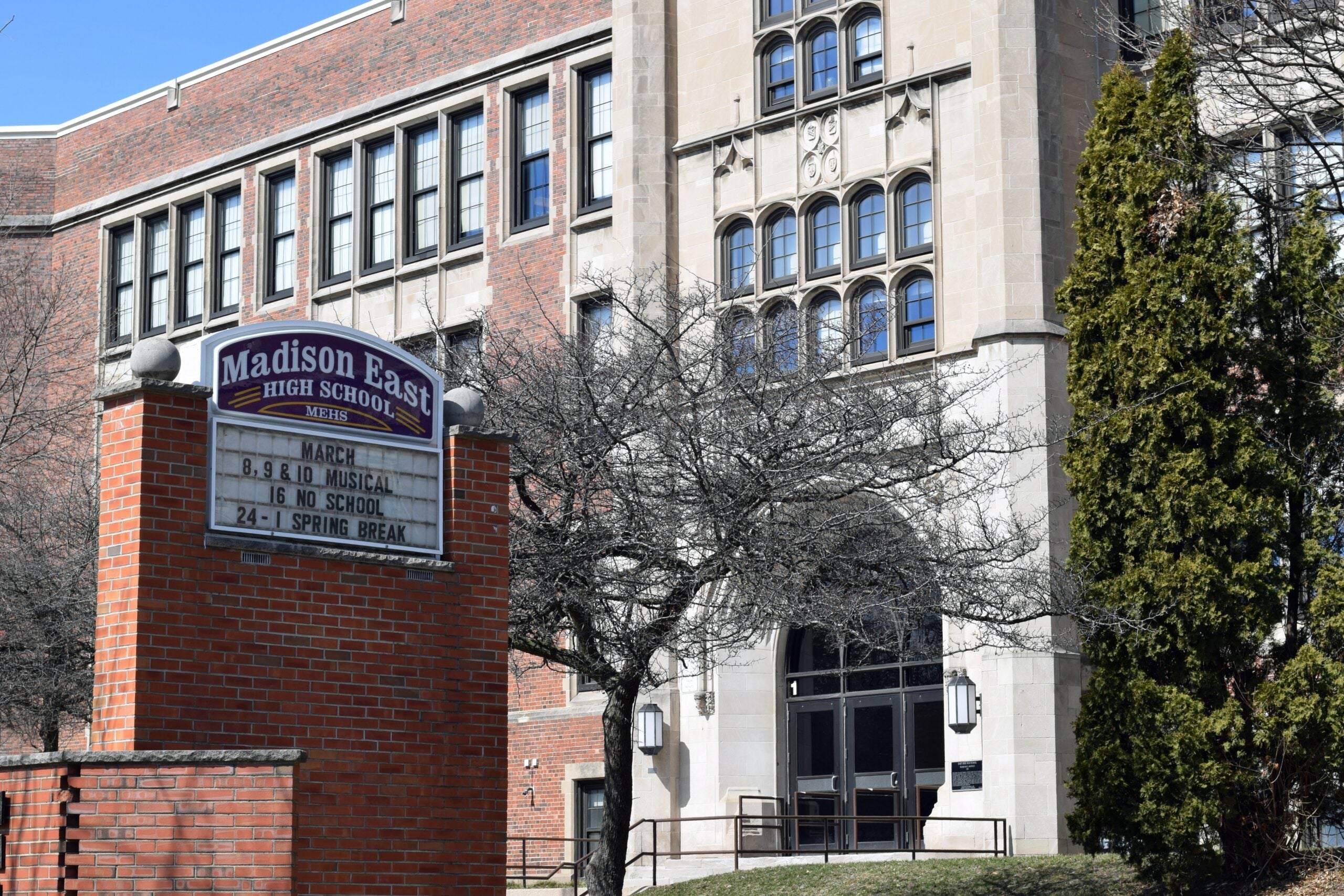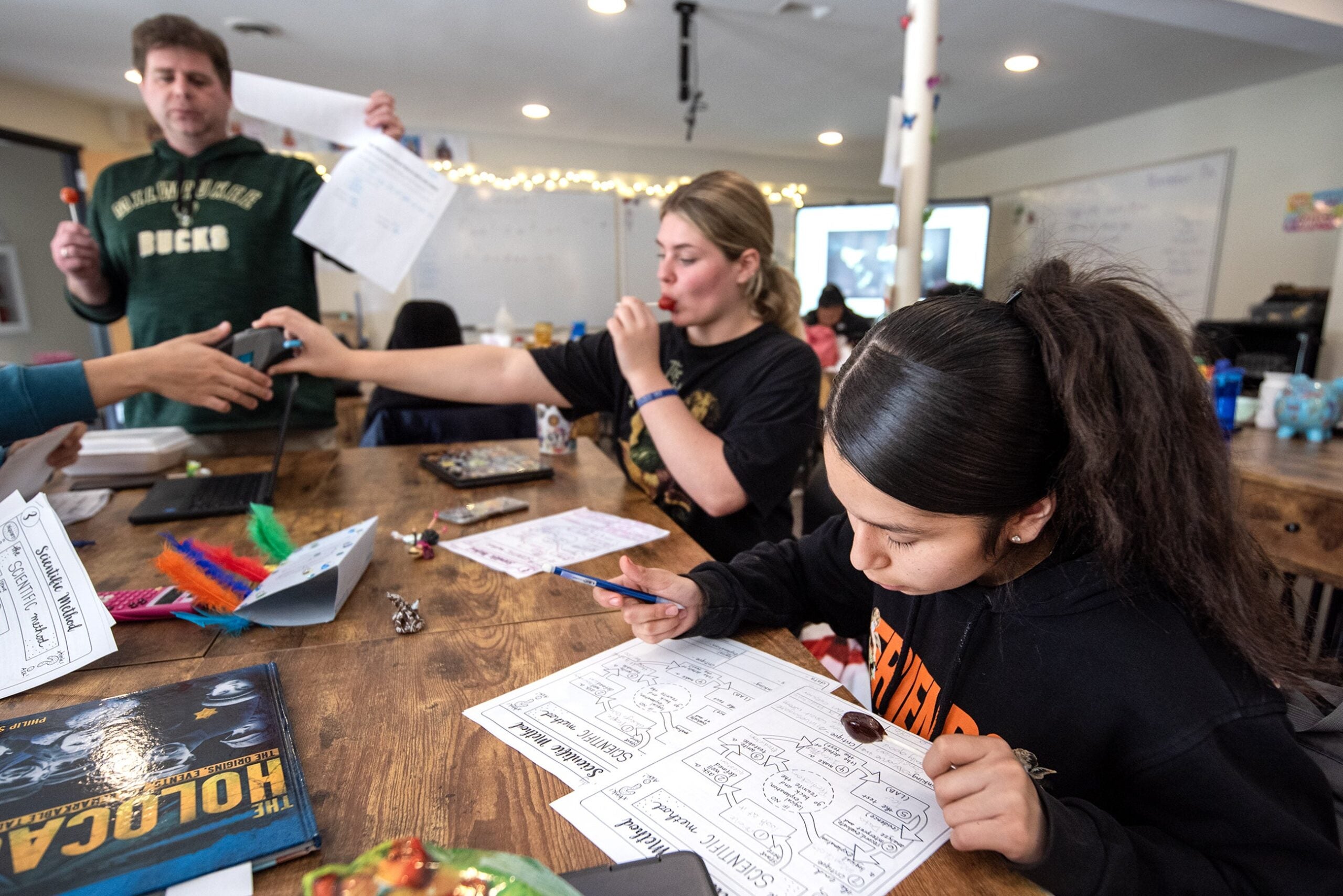Three days.
That’s how long Julie Richardson’s daughter, a freshman at Craig High School in Janesville, had in the school building before she had to switch to two weeks of all-remote learning due to a COVID-19 scare.
One of the other students in two of her classes had tested positive, so Richardson’s daughter was also told to stay home as a precaution. The 14-year-old had opted for hybrid learning, with half her classes online and the other half in person, so after she was put on quarantine, she was told to make arrangements with her four in-person teachers to continue learning outside the classroom.
Stay informed on the latest news
Sign up for WPR’s email newsletter.
For her mother, communication from the district about how to handle these switches has come up a little short.
“Can you go down every rabbit hole when you’re trying to figure out how you’re going to do in-person school with a pandemic? I don’t know,” said Richardson. “But this seems to be the first rabbit hole that you would look, because I feel like what happened with my daughter was the most likely worst-case scenario.”
Just over a week later, the rest of Craig High School and nearby Roosevelt Elementary followed after possible exposures hit a critical mass that prompted the district to temporarily move all learning online for two weeks. Virtual learning has since been extended through Oct. 4.
Since Wisconsin schools began reopening with in-person instruction, the reports of positive cases have popped up so quickly it’s difficult to keep track.
The Oshkosh school district shuttered and reopened several school buildings in response to positive cases before deciding to go fully virtual for two weeks starting this Thursday. Iowa-Grant School District’s elementary and middle school closed last week. Brodhead High School credited its closure to a student party. Kenosha, the largest district in the state to offer in-person learning, has had seven students and three teachers test positive, which means more are quarantining or isolating based on their possible exposure.
Since the spring, school districts have been warning families that a decision to start the year in person was no guarantee that it would stay that way.
“We’ve had the same message, really, since school got out last year, that hey, when school starts in the fall, expect that we’re probably going to have to transition, probably multiple times during the year, between various different platforms of instruction,” said Joe Dawidziak, administrator for the Bonduel School District. “Just expect that that’s going to happen.”
His district decided to switch its youngest learners — pre-K through second grade — to virtual learning for a week after the district heard it had some positive tests late on a weekend. He said covering classes for staff members who would need to quarantine was one piece of the puzzle.
“The bigger story is we knew that we had to do contact tracing,” he said. “It was 9:30 on a Sunday night, and we had no real good way of being able to do that at 9:30 and then notify parents their kids couldn’t come into school before school started Monday morning.”
Dr. Laura Cassidy, an epidemiologist with the Medical College of Wisconsin, noted that the immediate aftermath of a positive test or noticing symptoms consistent with COVID-19 is an essential period.
“Timing is very important because of the domino effect,” she said. “Once one child gets sick, if you don’t identify that early, and keep them from spreading it, then it spreads faster.”
Dawidziak wouldn’t say what the threshold was for Bonduel to switch to virtual learning, but said it’s calculated based on availability of teachers, custodians and all other school staff; as well as how many kids have tested positive, and who they’ve been in contact with.
“That threshold, I believe, is going to continue to dwindle as (substitute teacher) pools dwindle, as the availability of coverage dwindles,” he said. “Trying to get subs was a difficult thing prior to COVID, and it certainly hasn’t gotten any easier.”
Many substitute teachers are retired educators, who have, in many cases, decided to sit this school year out because their age puts them at higher risk for COVID-19 complications. At the same time, district teachers have been running into even more emergencies that could take them temporarily out of the classroom, whether it’s possible exposure to someone who later tested positive, or having to stay home with a child who’s quarantining.
In investigating why 276 of its nearly 1,700 teachers called in sick for Monday, the Kenosha Unified School District found that while 115 were out for pre-approved reasons like bereavement leave, approved family leave or jury duty, another 17 had COVID-like symptoms and 83 were out for other reasons, like a sick child or a doctor appointment.
Dawidziak, with the Bonduel district, said when they closed school for younger students, they similarly found that staff were out for a variety of reasons ranging from medical appointments to sick children — and they had those prearranged absences covered with substitutes and other teachers tagging in to help with classes.
“The issue that comes into play is when one staff member tests positive, and we already know they’ve been in close contact with other staff members, we started realizing this is going to be a bigger issue than we thought,” he said, “because we’re not just talking about getting a sub for the person who tested positive, we’re also talking about trying to get a sub for other adults who work in the building that they came in close contact with.”
With a staff of just over 100 people, he said it became clear pretty quickly that Bonduel couldn’t staff a fully in-person school week with so many out quarantining.
Richardson, the Craig High School parent, said things did get easier for her daughter when the whole school went virtual. Now, instead of working out how to keep up virtually with each teacher, she was getting the same level of education as all her classmates.
Richardson is worried what another quarantine, separate from the whole school going virtual, could mean for her kids’ education.
“If this were to happen to my daughter again, and she’s out for another 14 days, that’s a whole month of instruction,” she said. “That’s way too much to miss.”
With Wisconsin reporting several single-day records in new COVID-19 cases last week and a “high level” of coronavirus activity in 71 of the state’s 72 counties, it’s likely more students will have to quarantine, and more districts could go virtual.
Cassidy, the epidemiologist, said as long as community spread is high, it’s impossible to expect schools will be immune, since they’re pulling from that same community pool of people.
“If the community spread is low, then the chance of a child, or a teacher or any staff member going into school — the chance of them having it and spreading it is lower,” she said.
She added that while data from the spring didn’t show a lot of younger people getting COVID-19, that was also being gathered while much of the state was sheltering in place, and children were less likely to be in spaces where they could pick up or spread the virus.
“I don’t think we should dismiss children as not being at risk and not spreading it,” she said. “When we closed down in March, and all the schools closed down and the kids went home, the rate of the flu went from like 30 percent to 1.8 percent in kids, so if we only looked at that snapshot in time, we might say that kids don’t get the flu.”
Health concerns loomed large for Richardson. Both her daughter, the freshman who quarantined early, and her son, a junior, opted for the hybrid learning model, given the choice of in-person, virtual or hybrid — he because some of the classes he wanted to take were only available in-person, and she because she wanted some semblance of a normal freshman year. Richardson said she’d have preferred to keep them both all-virtual, and healthy, but that the hybrid model was a compromise.
“Did we make the right choice going hybrid, did we make the wrong choice, is this the best thing for them? Who knows?” she said. “That’s something my husband and I talk about, but that’s the whole thing about parenting, right — you never know.”
When students and teachers are going back into school buildings, Cassidy said it helps immensely to keep them in “pods” that keep classes or smaller groups all together with little contact outside their pod, so that if one person tests positive, they’ve had more limited interactions with other people who could contract COVID-19. Keeping close track of kids’ and adults’ movements can also make contact tracing easier, which in turn makes it easier to isolate people who may have come in contact with a positive COVID-19 case and keep them from potentially spreading it to more people.
“When you look at what professional sports teams are doing, they’re living in bubbles,” said Cassidy. “Don’t our kids deserve that, too — don’t they deserve the same protections?”
Wisconsin Public Radio, © Copyright 2024, Board of Regents of the University of Wisconsin System and Wisconsin Educational Communications Board.

